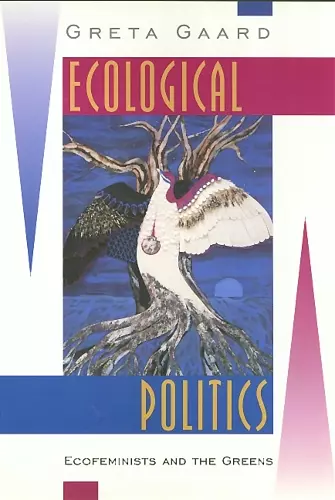Ecological Politics
Format:Paperback
Publisher:Temple University Press,U.S.
Published:11th May '98
Currently unavailable, and unfortunately no date known when it will be back

An illuminating account of two interconnected social movements from their grassroots origins in the 1970s to the 1996 Green presidential campaign
Beginning with the ecofeminists, this title describes the paths environmental causes, the feminist peace movement, the feminist spirituality movement, the animal liberation movement, and the anti-toxics movement, as well as experiences of interconnectedness that have led women (and a few men) to articulate an ecofeminist perspective.In the 1980s, ecofeminism and the U.S. Green movement seemed to offer some of this country's most powerful and promising solutions to problems of social and environmental justice. A decade later, ecofeminism has become more a perspective than a movement, and divisions within the Greens have deepened as its national focus has shifted from issue-based politics to party building. Why have these movements faltered? A member of both movements, Greta Gaard bases her analysis on her personal experience as well as extensive secondary sources and interviews with key theorists, activists, and speakers across the United States. By allowing each movement's members to speak for themselves, she traces the separate origins and development of each movement, explains their connections, and reveals the light that each can cast upon the other and on the difficulties facing social action in general. Beginning with the ecofeminists, Gaard describes the paths -- environmental causes, the feminist peace movement, the feminist spirituality movement, the animal liberation movement, and the anti-toxics movements, as well as experiences of interconnectedness -- that have led women (and a few men) to articulate an ecofeminist perspective. Tracing the movement from the 1980s to the present, she defines its present strands as liberal ecofeminism, radical ecofeminism, socialist ecofeminism, and social ecofeminism. Gaard illustrates the development of the U.S. Greens from a national movement into a political party. She defines the various factions -- the Left Greens, the Youth Greens, and the Green Politics Network -- that influenced the movement's direction and underlay the debates during Ralph Nadar's 1996 presidential campaign. She shows how the history of these three groups can be seen as stages in the transition from a leftist and sometimes anarchist action that places the Green movement squarely within the pattern of other social movements around the world. Despite the significant influence that ecofeminists have had in shaping the Greens as a national movement, many have chosen to withdraw from the Greens. Gaard looks at the reasons for member disaffection...
ISBN: 9781566395700
Dimensions: 229mm x 152mm x 23mm
Weight: unknown
337 pages